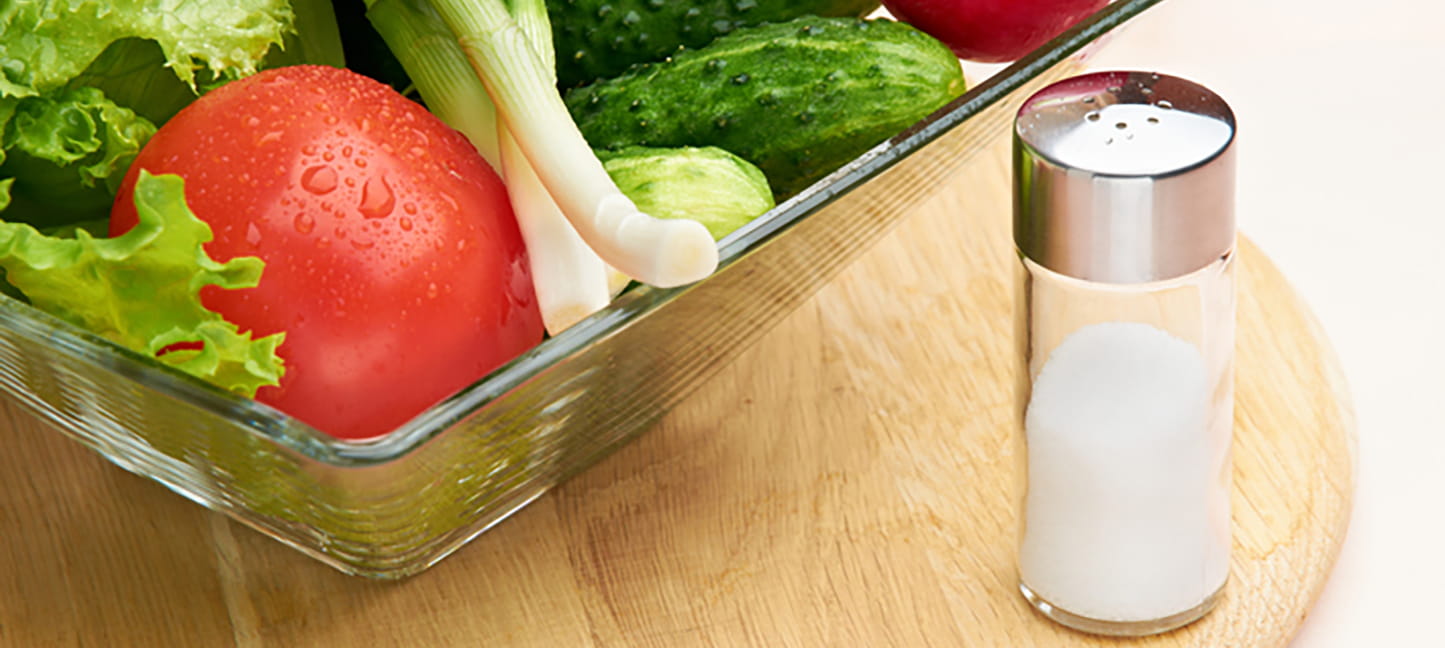Here’s what you need to know about sodium’s impact on your kidneys

When it comes to maintaining good kidney health, it's important to watch your sodium intake. Sodium is a mineral that is present in all foods, and while it is necessary for good health, most people eat more sodium than they need. For those with kidney disease or other kidney issues, limiting sodium is even more crucial.
“If the body cannot get rid of the extra sodium, fluid builds up. Extra fluid increases the work of the heart and kidneys and may increase blood pressure,” says Geoffrey Teehan, MD, system chief of nephrology at Main Line Health.
Some health conditions like liver disease, heart disease and kidney failure are affected greatly by this extra fluid. Eating less sodium may help control these problems.
Sources of sodium
So, where does all this sodium come from? The main source is table salt, which is a combination of sodium and chloride. One teaspoon of salt has 2,300 milligrams of sodium. Processed foods also have large amounts of sodium, as well as many non-prescription drugs and even mouthwash.
It’s important to note that alternative forms of salt — including sea salt — are still sodium chloride and no different in terms of the risks they pose to blood pressure, heart disease and other conditions.
You will sometimes see the term sodium abbreviated "Na" as in NaCl (Sodium Chloride), which is table salt.
To choose foods that are healthier for your kidneys, look for labels that indicate low sodium content. "Sodium-free" products have less than 5 milligrams of sodium per serving, "very low-sodium" products have 35 milligrams or less per serving and "low-sodium" products have 140 milligrams or less per serving.
“However, be aware that reduced sodium and unsalted products still contain some sodium. When you’re on a very low sodium diet, even a small amount of salt has a lot of sodium in it,” says Dr. Teehan.
Amount of Sodium in Salt |
||
| ¼ teaspoon salt | 600 milligrams of sodium | |
| ½ teaspoon salt | 1,200 milligrams of sodium | |
| ¾ teaspoon salt | 1,800 milligrams of sodium | |
| 1 teaspoon salt | 2,300 milligrams of sodium | |
| 1 teaspoon baking soda | 1,000 milligrams of sodium | |
What to know about low sodium diets
If you're on a very low sodium diet, even a small amount of salt can have a big impact. It's important to avoid adding salt to your foods when cooking or at the table, and to steer clear of seasoned salts like onion salt and celery salt. Be cautious when choosing salt substitutes, as many contain large amounts of potassium that can cause medical problems for some people.
“It's also worth noting that many fat-reduced or calorie-reduced products are not lower in sodium than their regular counterparts,” says Dr. Teehan. “Always check labels carefully to make sure you're choosing low sodium options.”
Here's an example of a kidney-friendly meal plan:
Breakfast
- One cup milk
- Orange juice
- One poached egg
- One slice of toast with 1 teaspoon margarine and jelly
- Banana
- One cup frosted shredded wheat squares
Lunch
- Grilled chicken sandwich (3 ounces fresh grilled chicken, 1 tablespoon mayonnaise, lettuce and tomato slice on a whole wheat roll)
- Unsalted pretzels
- Carrot sticks
- Apple
Dinner
- One cup milk
- 3 ounces fresh, lean beef
- Baked potato
- Steamed broccoli with lemon and salt free herbs like Mrs. Dash
- Dinner roll
- 3 teaspoons margarine
- Fresh peach or canned slices
- 2 sugar cookies (homemade with no added salt)
Snack
- Iced tea
- Unsalted popcorn
- Fruit cocktail
Talk to your doctor or others on your health care team if you have questions about how much sodium you should include in your diet.
“By watching your sodium intake and making smart food choices, you can help maintain good kidney health,” says Dr. Teehan.
Next steps:
Make an appointment with Geoffrey Teehan, MD
Learn more about kidney care at Main Line Health
The power of nutrition for your kidney health
 Content you want, delivered to your inbox
Content you want, delivered to your inbox
Want to get the latest health and wellness articles delivered right to your inbox?
Subscribe to the Well Ahead Newsletter.
